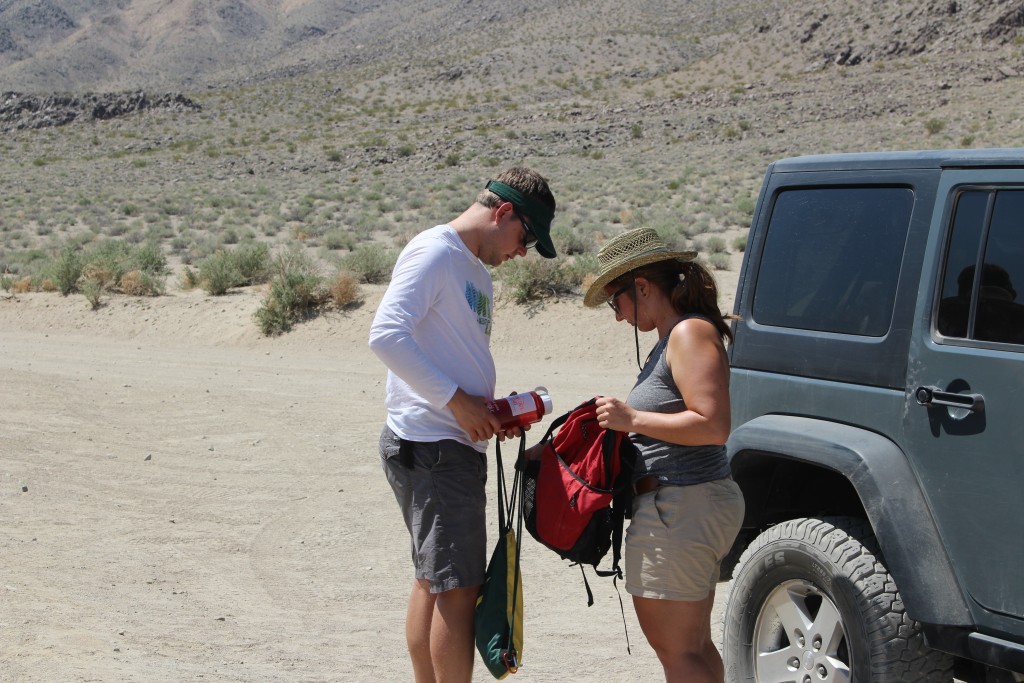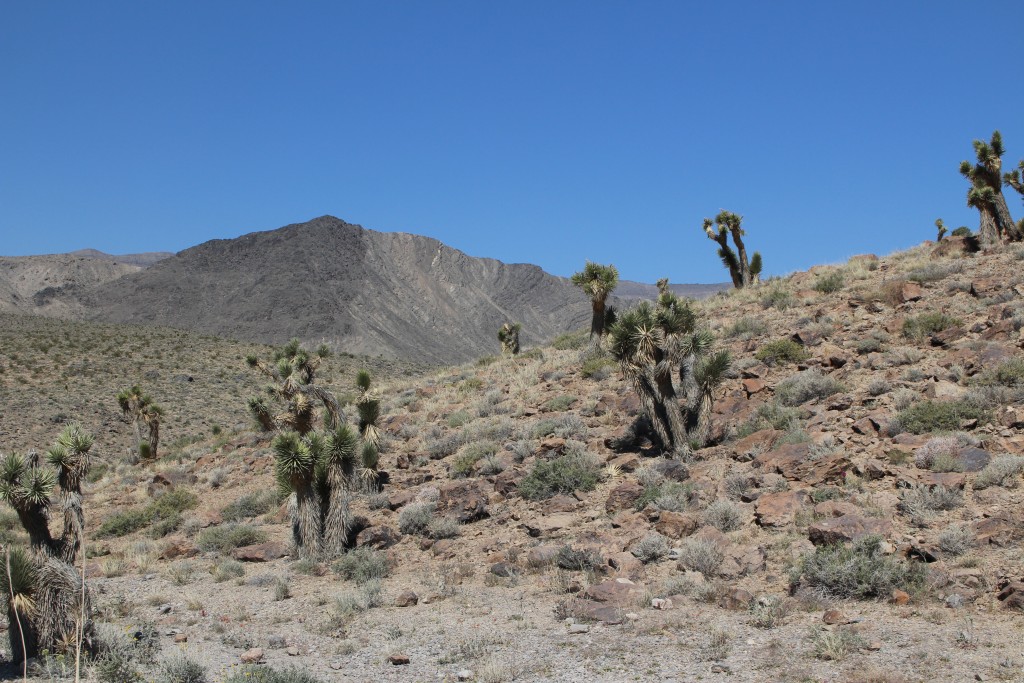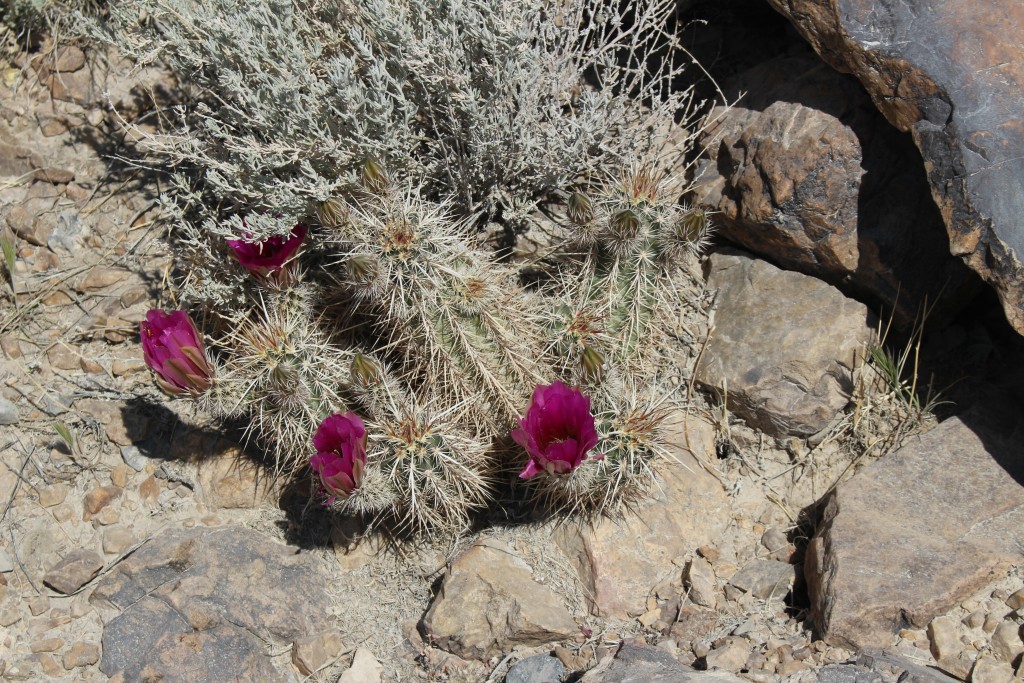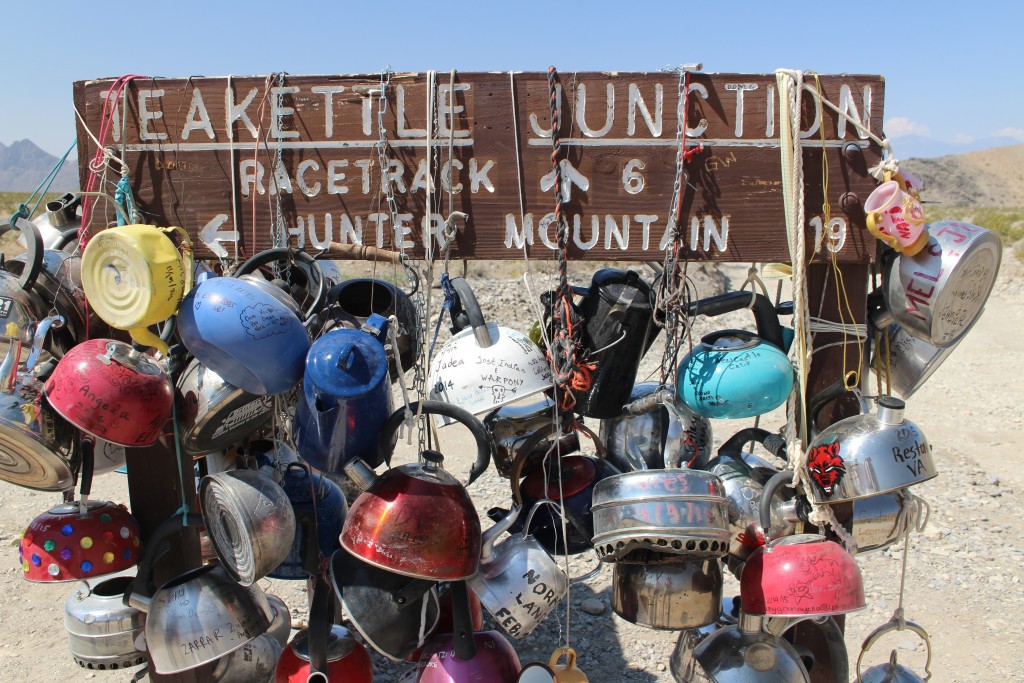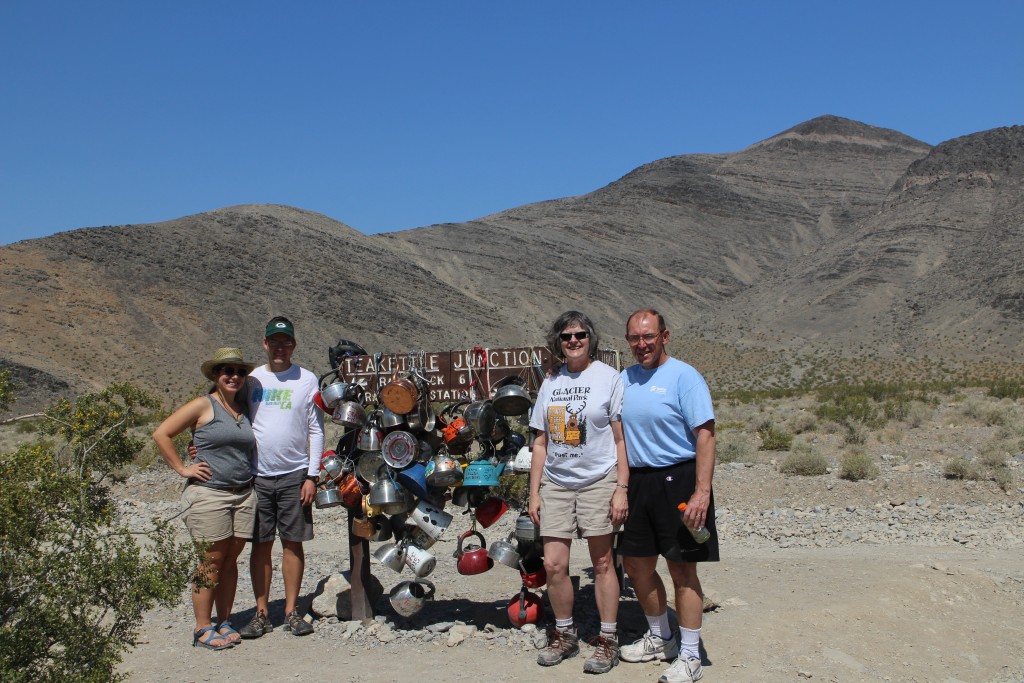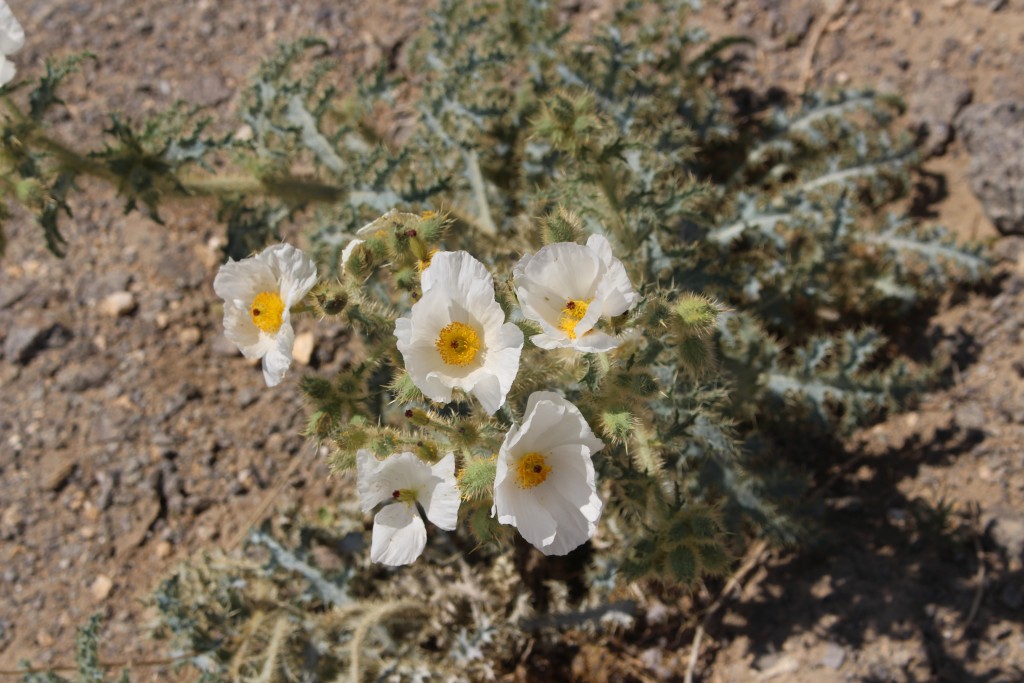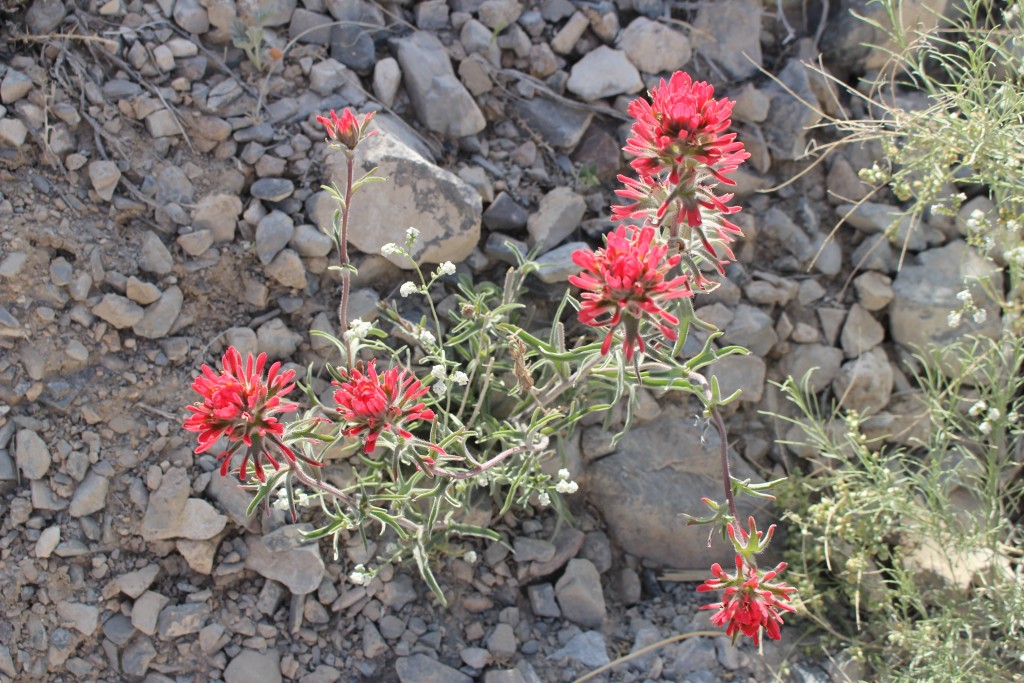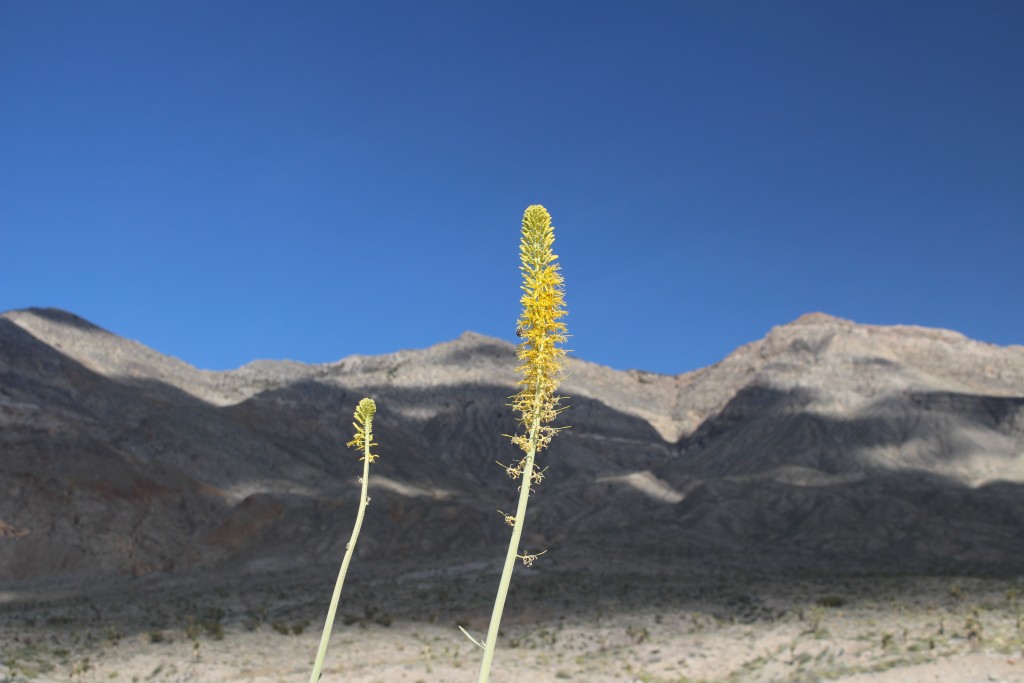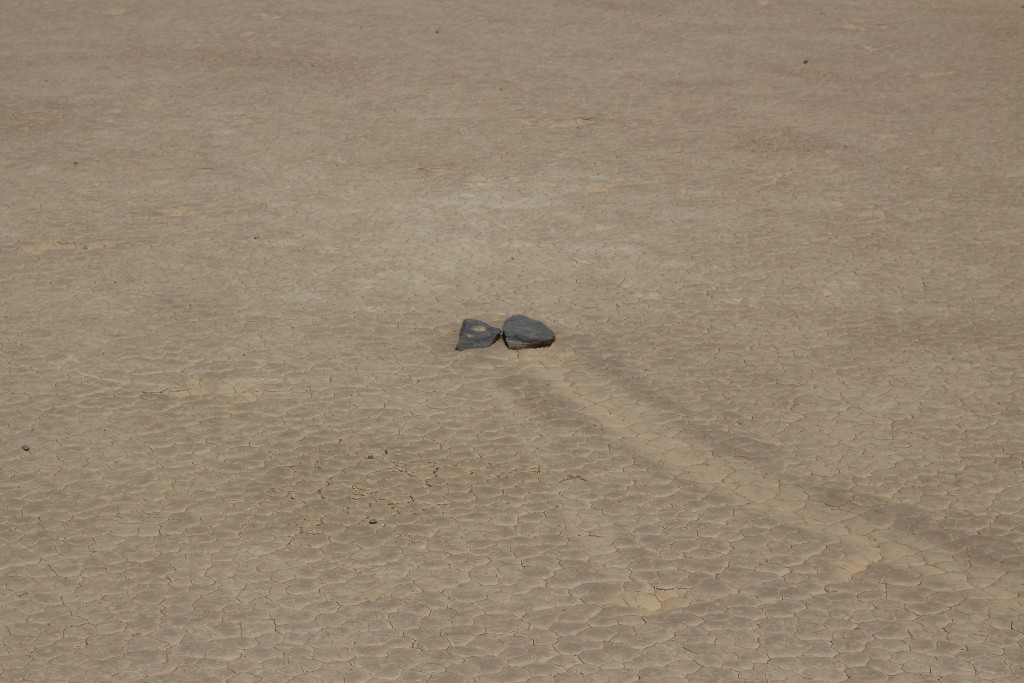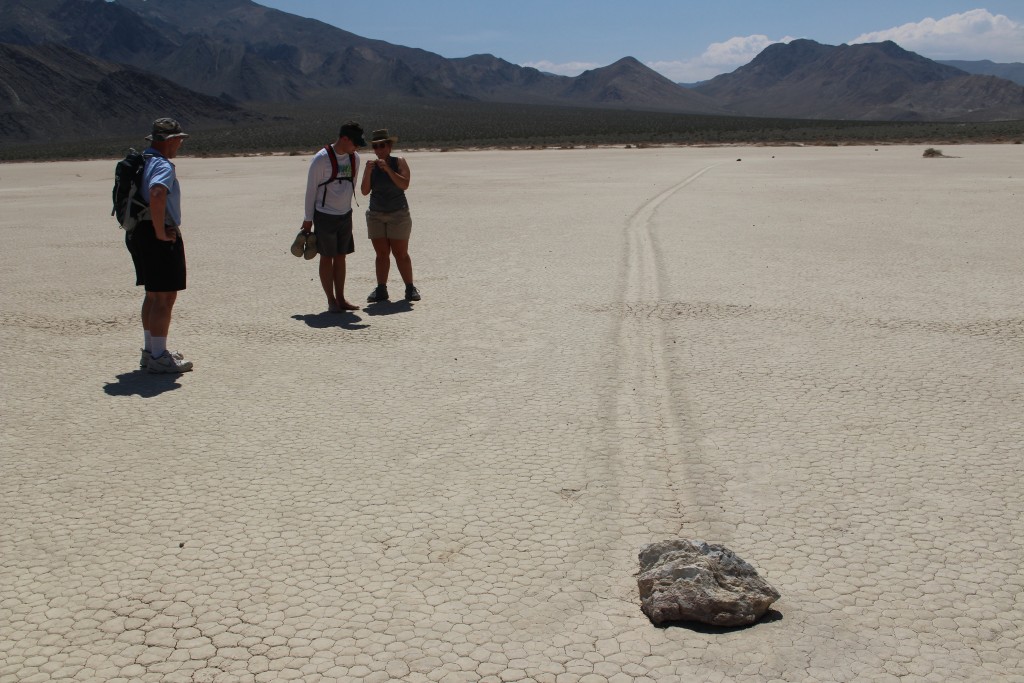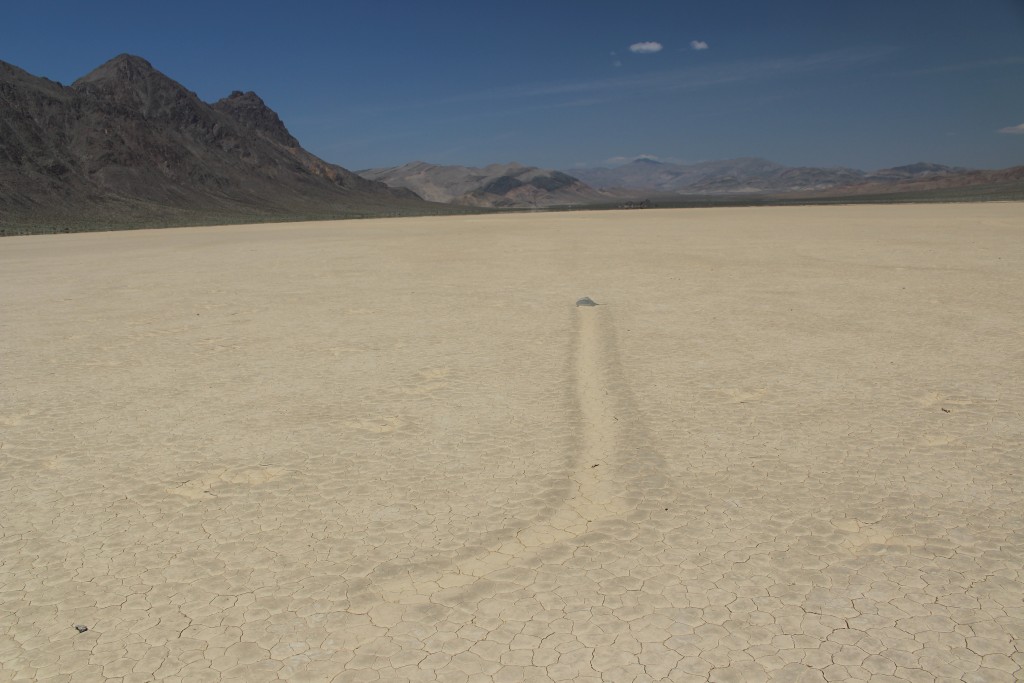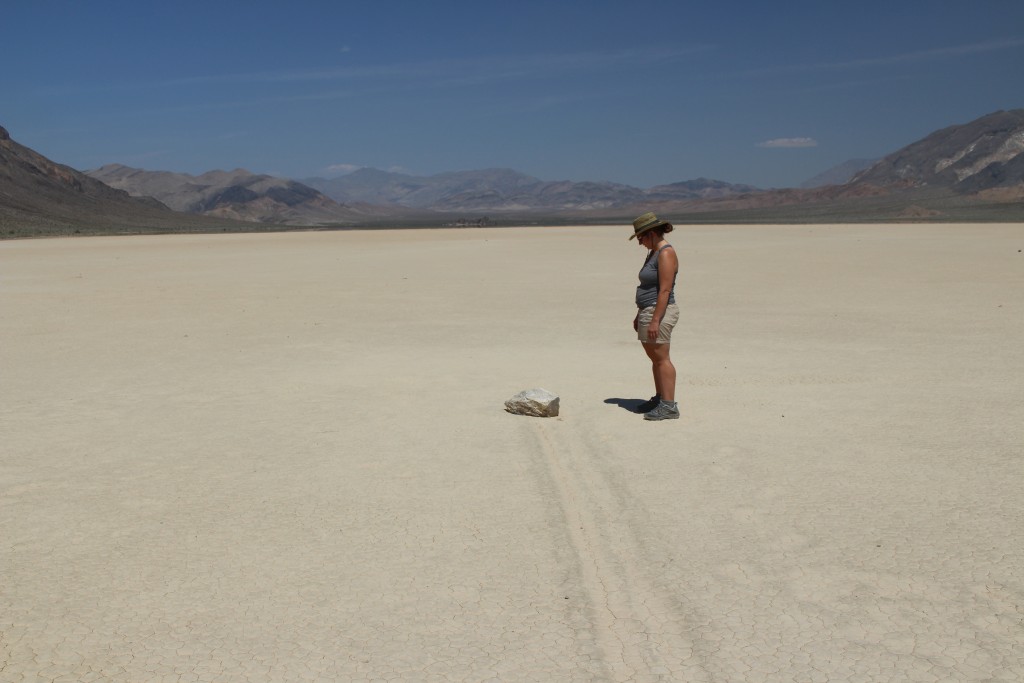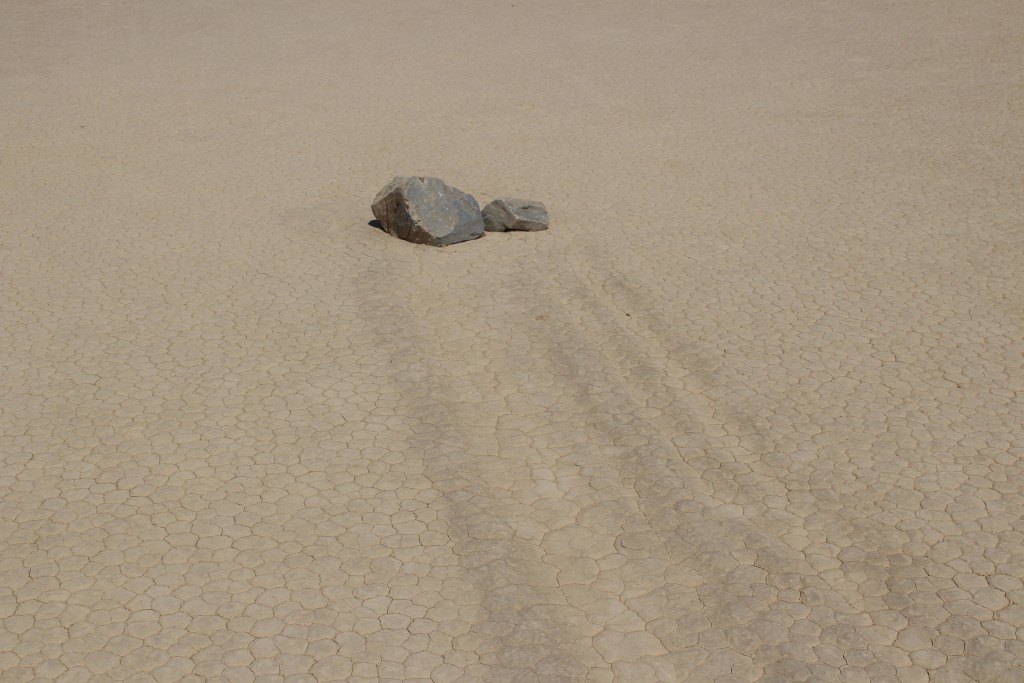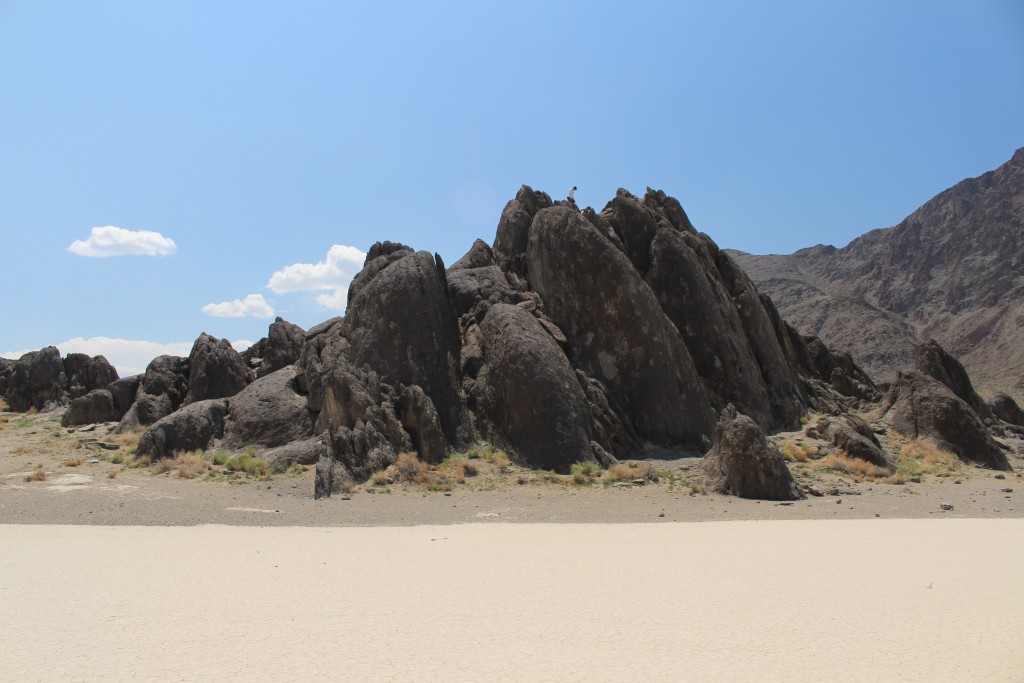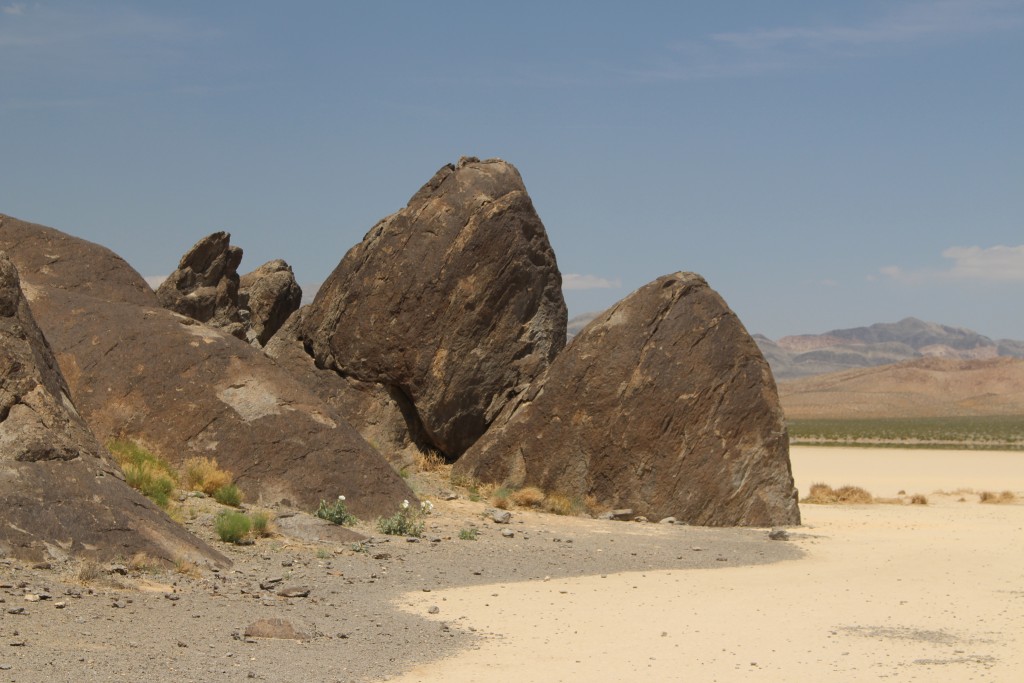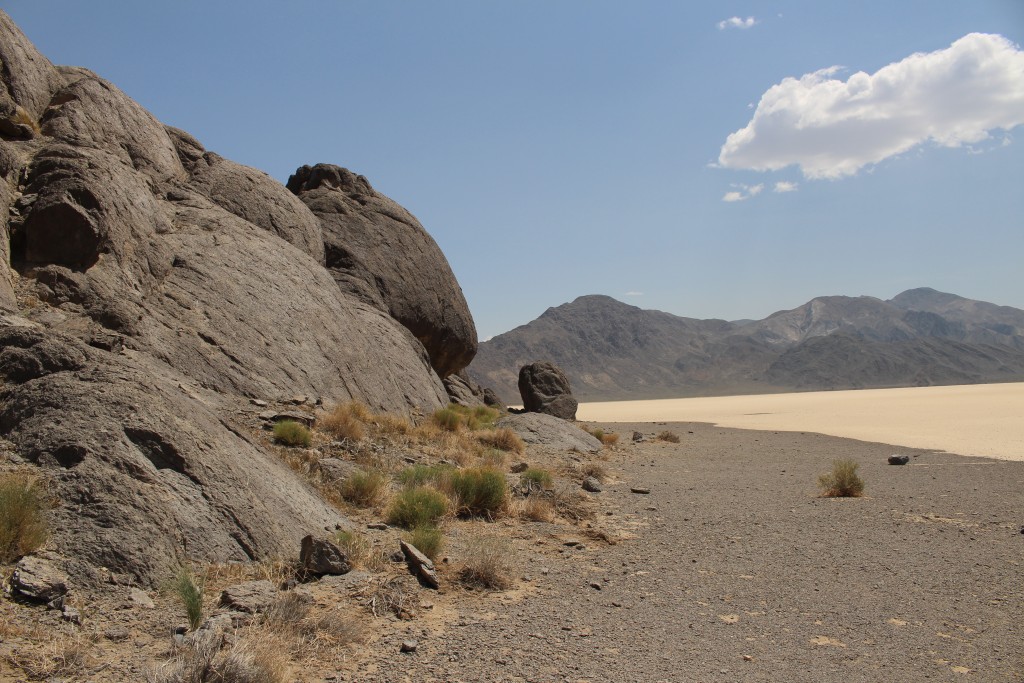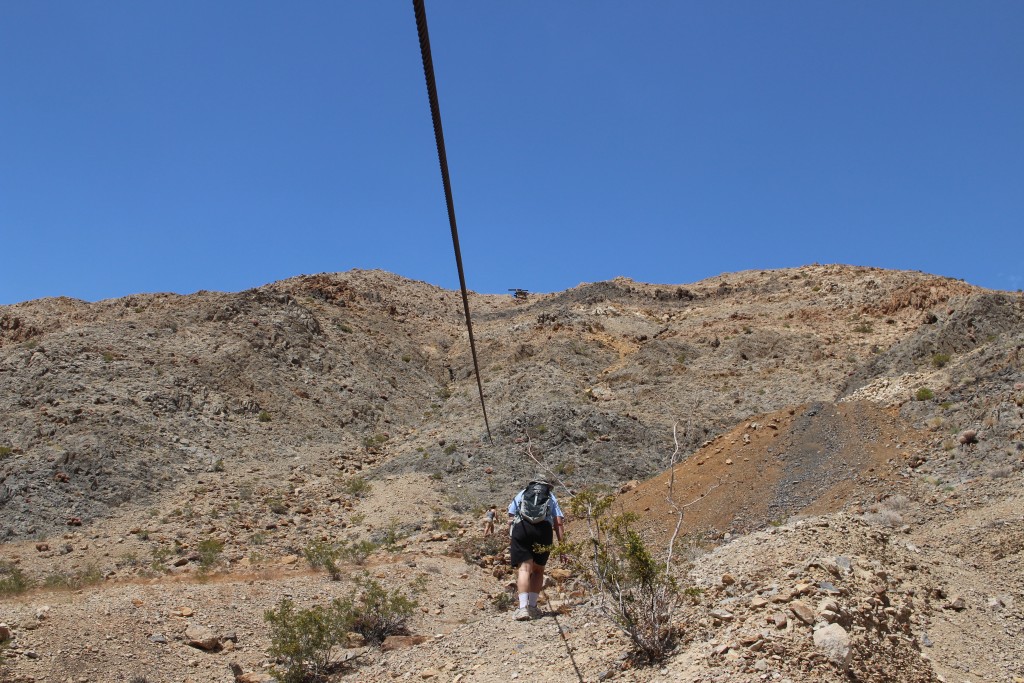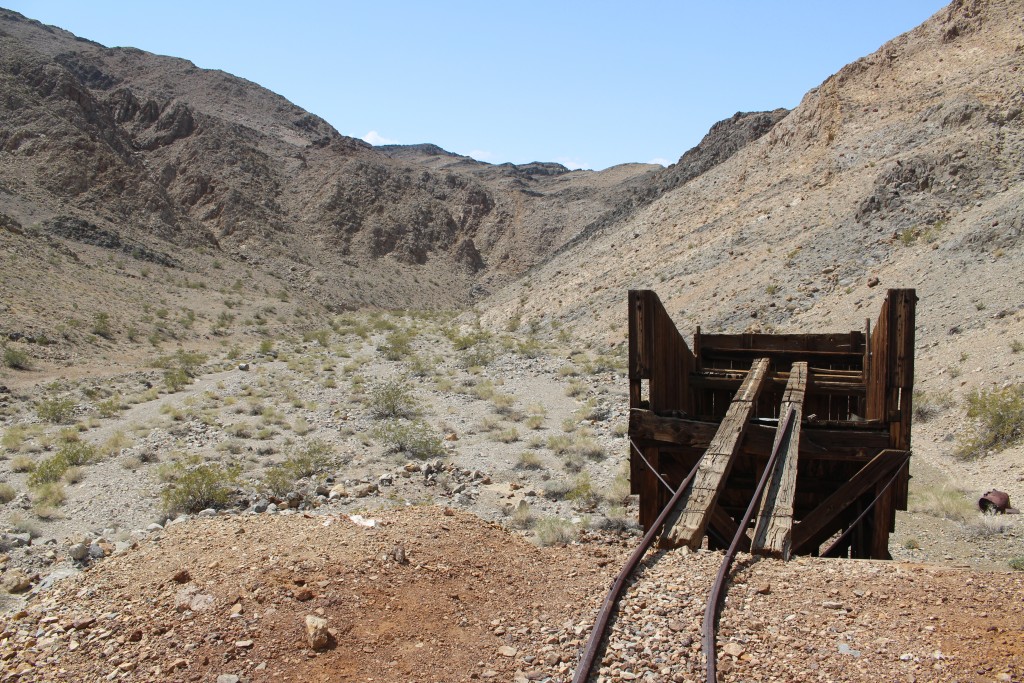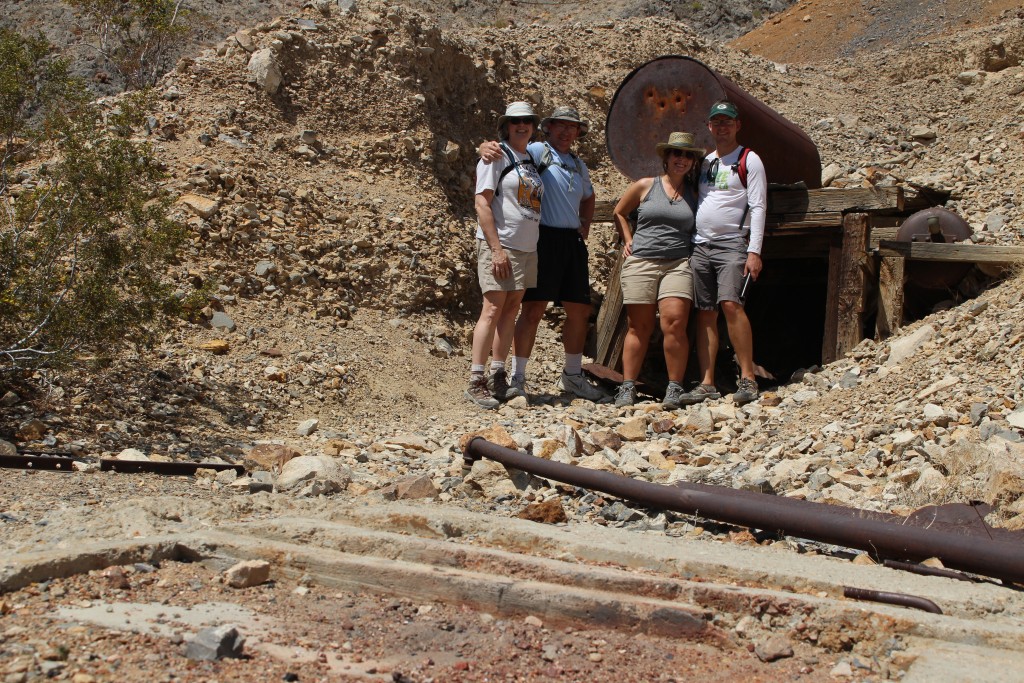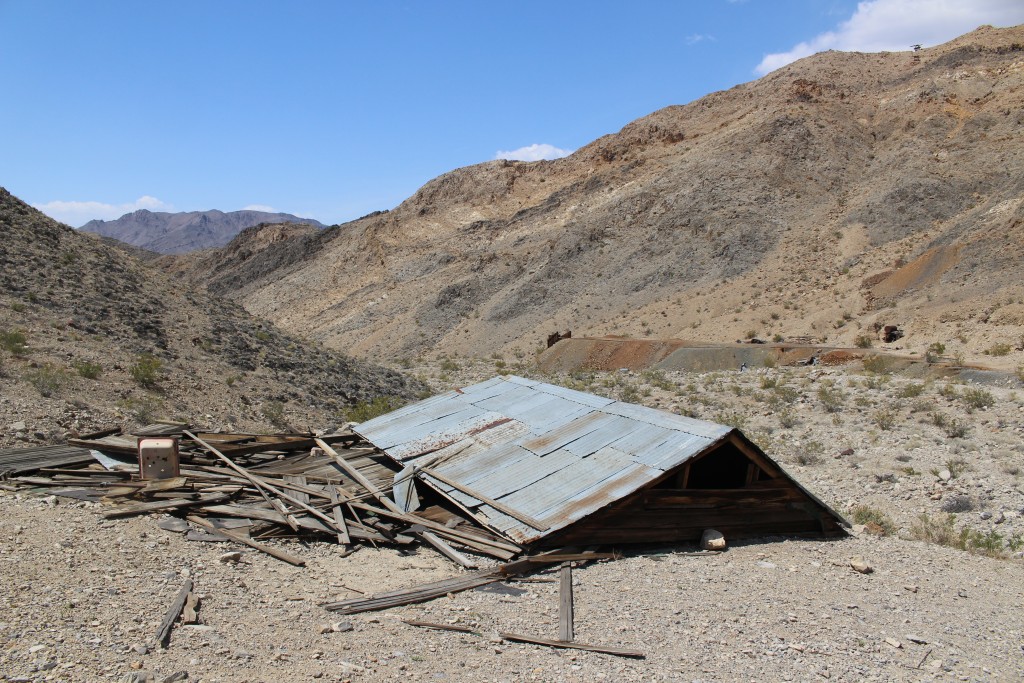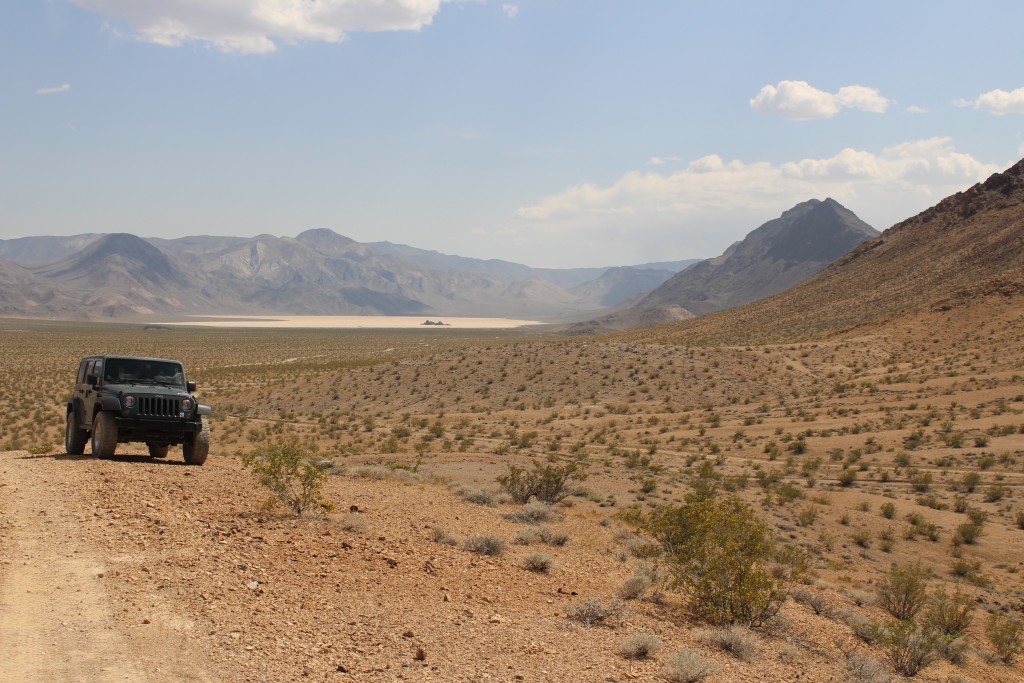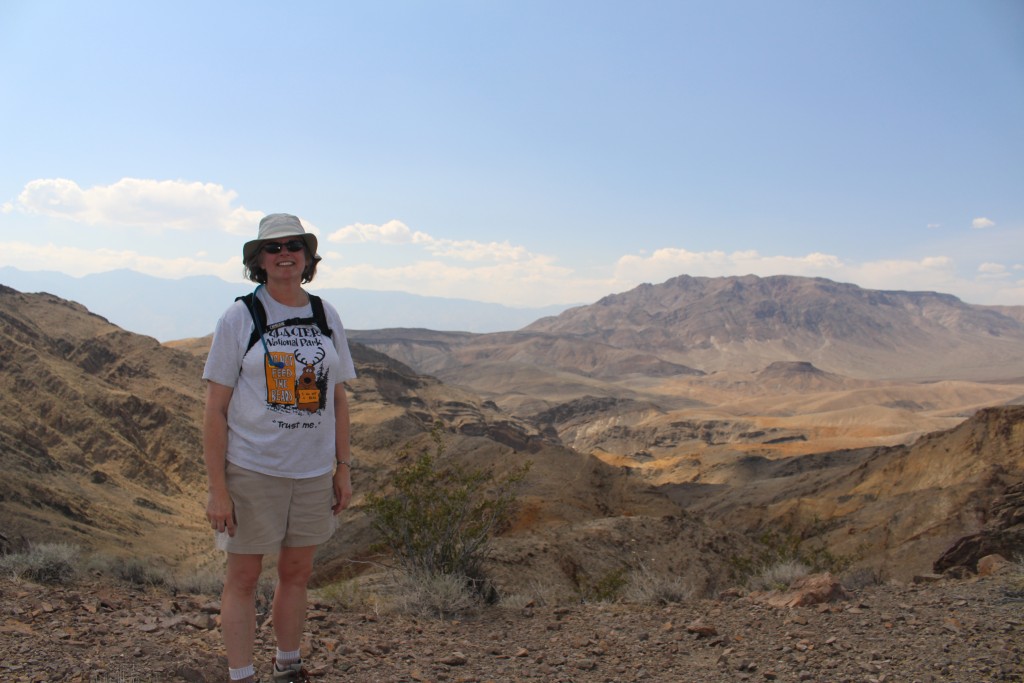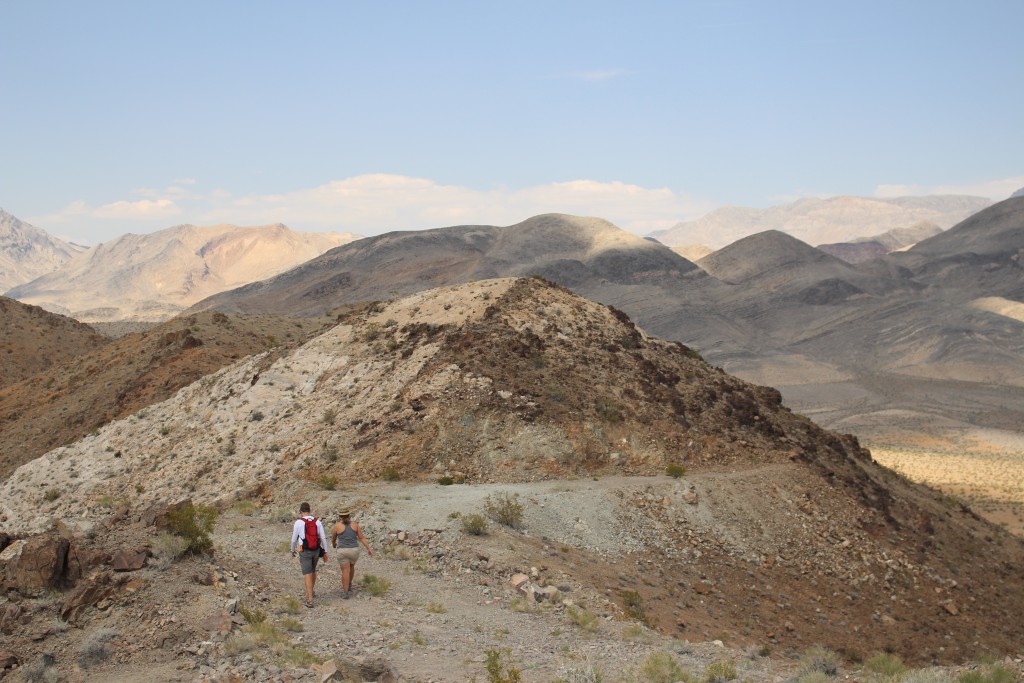Before we left Death Valley, we rented a jeep for one more adventure. Adam and Laurie, the Christian Ministry in the National Parks leaders, picked up the jeep at Furnace Creek and drove up to our compound to pick us up. Then we headed past Ubehebe Crater to the Racetrack.
The Racetrack is a playa (dry lakebed) that is extremely flat. There are rocks on it that “move” and you can see their tracks on the dried mud. This is the place that everyone wants to go and where the rangers recommend they don’t go unless they have a jeep. On a map it looks like it will be easy to get to the Racetrack, but it is 27 miles down a rough and washboard dirt road. It took us 2 1/2 hours to drive the 30 miles from our compound. The drive is beautiful and we saw a Joshua Tree forest and fields of wildflowers. The scarlet Indian Paintbrush and the deep maroon of the cholla cactus flower were especially lovely. There was also lots of globemallow and brittlebush.
When we got to the end of the Racetrack Playa, we were the only people within miles. We walked out on the playa to get close to the rocks. The rocks were not as big as I was expecting, but their tracks were very clear. How they move had always been a mystery until a small group of scientists caught them moving a year ago. After a rain, when the water on the lakebed freezes and then begins to break up, the ice acts as a kind of sail for the rocks it is encasing. The wind moves the rocks across the slippery mud, which leave the trails behind when the water dries up again. You can find a good explanation and the video of the moving rocks here. The rocks don’t all move at the same time or at the same speed, so the tracks curve, and intersect, and even meet in a few places. Seeing the rocks and their tracks was very cool.
We walked around the Grandstand, which is a large island of quartz monzonite in the middle of the playa. We considered climbing Ubehebe Peak, but it was too steep and tall for me and the others decided not to leave me behind while they climbed it. Instead we went to Ubehebe Mine which was down a canyon on a primitive road (a driving challenge for Tom). Ubehebe Mine was operated off and on from 1908 until 1968 when it was finally closed for good. They mined copper, silver, and lead from it. Today there is a collapsed house, a car carcass, an ore shaft, a tram to the top of the hill, and an ore dumpsite. Then we climbed to the Copper Queen Mine, which was a nice hill with a great view but not nearly as tall as Ubehebe Peak.
The only time we saw other people was as we hiked up to the Copper Queen Mine – lots of jeeps went by – and one other couple came to the playa. Other than that, we had the place to ourselves.
Going to the Racetrack was a wonderful way to end our adventure at Death Valley. Just like the rocks, it was time for us to be moving on. We thoroughly enjoyed our day with Adam and Laurie and we were thankful that they took the jeep back, just as they had picked it up. They saved us hours of driving and their company made our day even better.

